lander
Latest
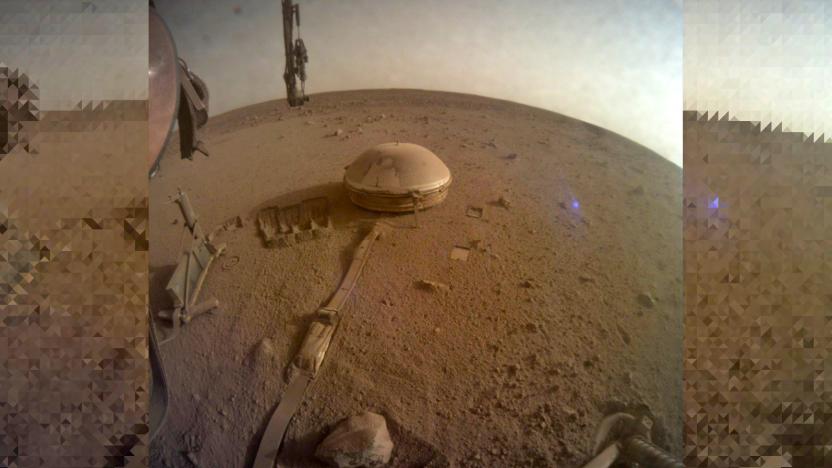
NASA's InSight lander says goodbye from Mars
"My power’s really low, so this may be the last image I can send," the NASA InSight Twitter account said.

China's Chang'e-5 mission is off to collect samples from the Moon
By the end of the week, China's Chang'e-5 craft will be orbiting the Moon, ready to collect samples from the lunar surface for the first time in decades.

Blue Origin teams with spaceflight veterans to complete its lunar lander
Blue Origin won't be alone in working on a crewed lunar lander that will (hopefully) participate in NASA's Artemis program. Jeff Bezos' outfit has unveiled a trio of partners that will help it complete the Human Landing System, all of which are space industry veterans. Lockheed Martin will work on the reusable Ascent Element vehicle as well as lead crewed flight ops. Northrop Grumman, meanwhile, will produce the Transfer Element that brings the landing system toward the Moon. Draper, in turn, will handle descent guidance and avionics.

NASA's InSight lander can finally dig a hole for its Mars heat probe
NASA's InSight lander was supposed be digging a hole so a probe (above) could measure the heat escaping from Mars' interior, but it hasn't made much progress since work got started in February -- it hadn't even finished burying itself. At last, it's making some headway. The agency has revealed that the probe, nicknamed "the mole," is finally digging in earnest thanks to a new strategy. The arm had been stymied by unusually rough soil, but the team found it could get the necessary friction by having InSight press its robotic arm against the probe.

India found its missing Vikram lunar lander
India has located its Vikram lunar lander after losing contact, and the situation isn't looking great. Indian Space and Research Organization chairman K. Sivan said that cameras aboard the orbiter found the spacecraft and believed it had been a "hard landing." There were efforts in progress to contact the lander, Sivan said, although there hadn't been any sign of success as of this writing.

India's Vikram lunar lander lost contact during its descent
Today India attempted to become only the fourth nation to successfully soft-land on the surface of the Moon. That mission appears to have failed, when the Indian Space Research Organisation (ISRO) lost contact with its Vikram lander at an altitude of 2.1km above the lunar surface. The space agency has said only that it is analyzing available data, and that the Chandrayaan-2 spacecraft is still in orbit. Indian prime minister Narendra Modi is scheduled to address the nation at about 10:30 ET. If the mission is lost, then out of three soft-landing attempts this year it will be the second to go awry. China's Chang'e 4 reached the far side of the Moon in January, while the privately-owned Beresheet lander from Israel crashed in April after sending back one last photograph.
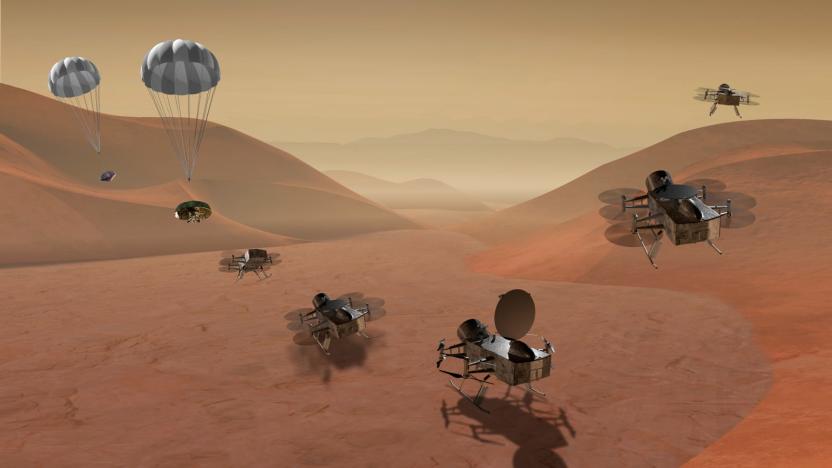
NASA's Dragonfly mission is sending an eight-rotor drone to Titan
NASA announced today its next big mission to explore our Solar System. The agency has greenlit a mission called Dragonfly that will send a spacecraft to the surface of Titan, Saturn's largest moon. Dragonfly, the latest of NASA's New Frontiers program, was selected because of Titan's unique makeup, which makes its one of the more promising candidates for discovering signs of microbial life.
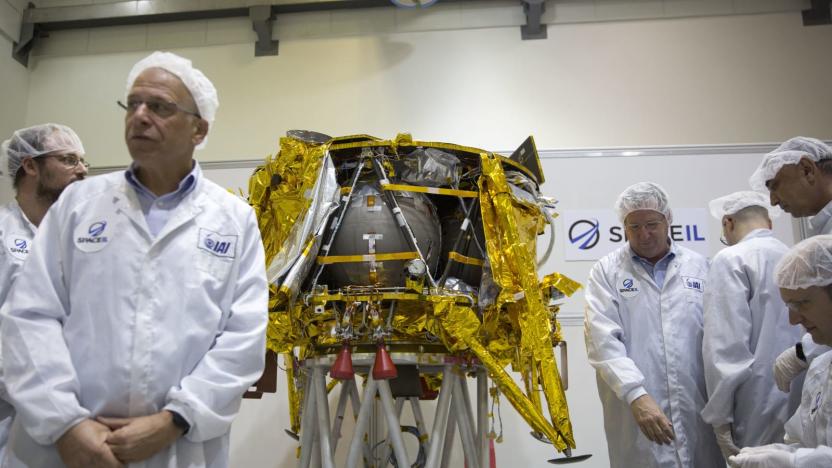
SpaceIL plans second private Moon lander despite crash
SpaceIL's first attempt at a private Moon landing didn't go according to plan. However, that isn't deterring the team from giving it another shot. Founder Morris Khan has announced that the team will build another Beresheet lander and "complete the mission." The task force behind the new lander will start its work "first thing" on April 14th, he said.

Privately-owned Moon lander crashes in historic attempt
Private spaceflight isn't quite ready to mark another milestone. SpaceIL's Beresheet lander has crashed on the Moon after mission controllers lost communication during its descent to the lunar surface. It did successfully take a selfie on the way down, but its experiments are a bust. It was supposed to measure the local magnetic field and use a NASA-made laser retroreflector array (eight mirrors with quartz cube corners) to relay its position to the Lunar Reconnaissance Orbiter using light.
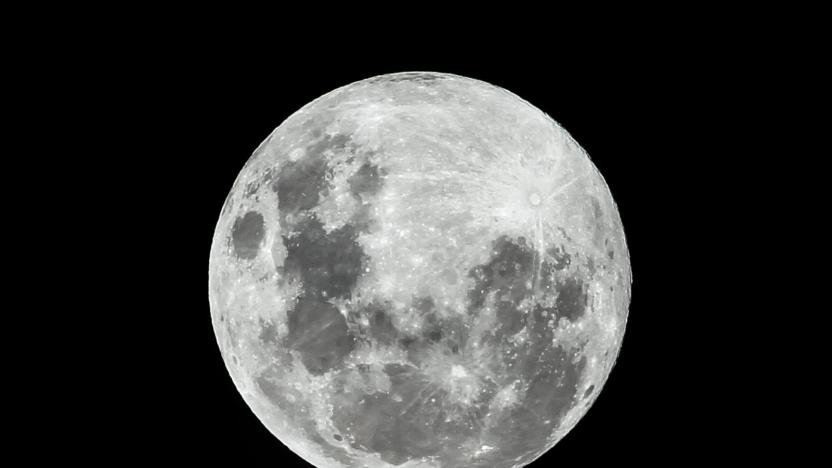
China’s Chang’e-4 lander and rover head to the far side of the moon
China launched its Chang'e-4 rover and lander today, which if all goes well, will land on the far side of the moon in the coming weeks. It will be the first surface mission to land on that side of the moon, which can't be seen from Earth. While China hasn't shared a lot of information about the mission, a study published earlier this year has given us a look at what's likely in store, and if successful, the mission will help us understand this little-studied side of the moon and provide insight into some of the differences known to exist between the two sides.
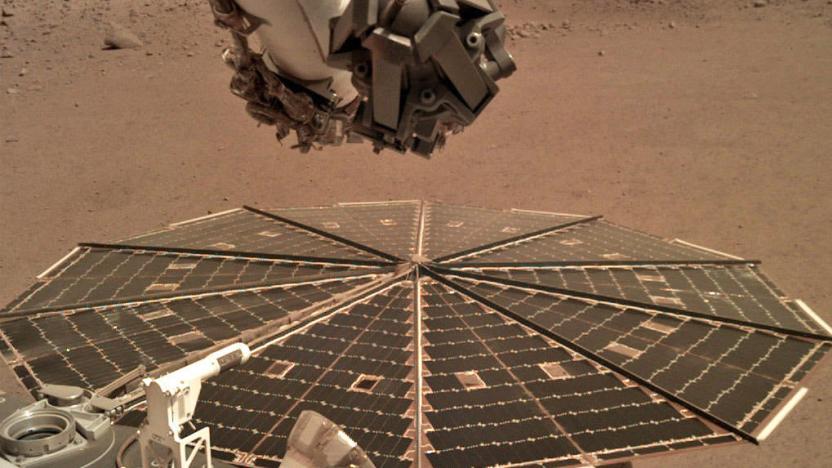
Hear the wind on Mars for the first time, thanks to the InSight lander
Since landing on Mars last week, NASA's InSight lander has been taking pictures of itself and its surroundings as it prepares to unload the scientific instruments it brought along to the planet. But the lander has also picked up something that other Mars missions never have -- audio of the planet's winds. "Capturing this audio was an unplanned treat," Bruce Banerdt, InSight's principal investigator, said in a statement. "But one of the things our mission is dedicated to is measuring motion on Mars, and naturally that includes motion caused by sound waves."
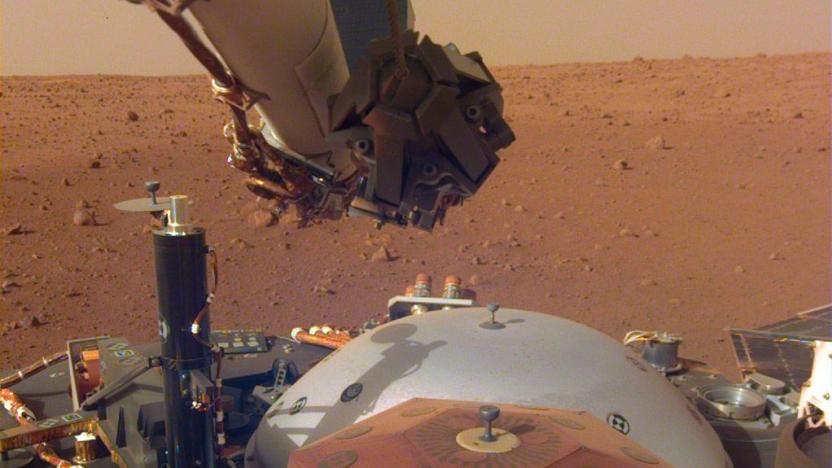
NASA’s InSight lander is ready to get to work
NASA's InSight lander arrived on Mars last week and now it's prepping for the next stage of its mission. The lander is equipped with a nearly six-foot-long arm, which will be used to lift sensitive scientific instruments off of the lander and place them on the Martian surface -- the first time a robot has been used to do so on another planet. Thus, the arm plays a really key role in this next step of the InSight mission, as placement will be crucial for the mission's overall success. But new images from InSight show the lander is up for the challenge, as the arm is working and has already started to collect images of its surroundings, information that scientists will use to determine where InSight's instruments should be placed.
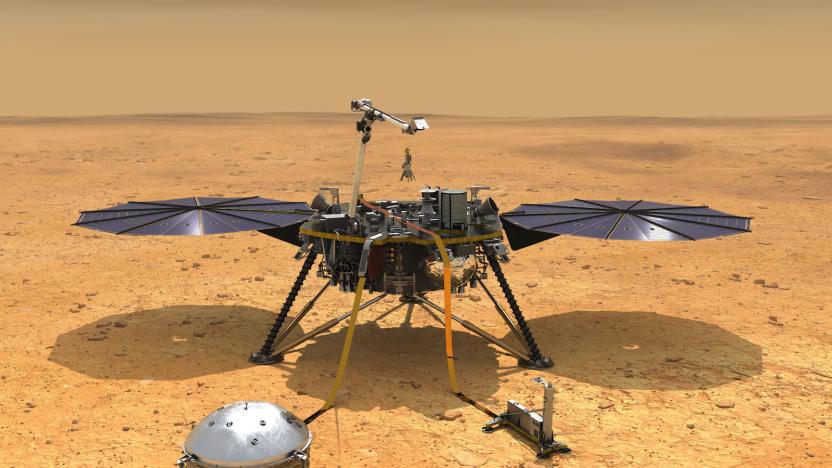
NASA’s InSight lander has arrived on Mars
NASA's InSight lander has touched down on Mars, completing its over six-month journey to the planet. InSight, which stands for Interior Exploration using Seismic Investigations, Geodesy and Heat Transport, landed on Mars just before 3PM Eastern after a successful entry, deceleration and parachute deployment. The lander will soon get to work -- assuming its solar panels deploy correctly -- and will, for the first time, give us a look at the interior of our planetary neighbor.
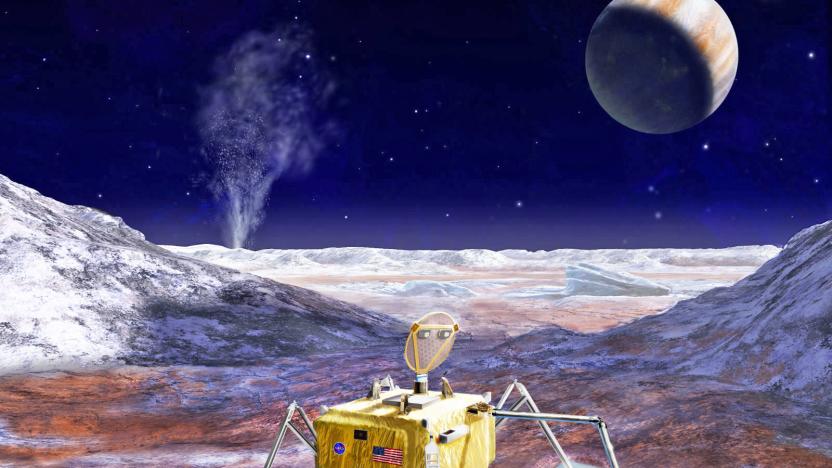
NASA wants to send a life-detecting lander to Europa
Back in June 2016, NASA commissioned 21 scientists to design a lander headed for Europa, conjure up science objectives for it and figure out if the mission is feasible. After around eight months of deliberation, the scientists have finally completed their assignment and presented their report (PDF) to the space agency. As you can see above, they went for a boxy spacecraft with spindly legs to accomplish the mission's goals, the biggest of which is to find signs of past and present life.

Mars probe crashed because it misjudged where the ground was
The European Space Agency believes that it knows what caused its Schiaparelli lander to crash on the surface of Mars. It turns out that the spacecraft was hurtling towards the ground perfectly well until it, uh, forgot where the ground actually was. A sensor tasked with determining its altitude failed for a single second, but that was long enough to wreck the entire mission. Since the vessel believed that it had already arrived, it ran through the rest of the landing process and activated the on-ground sensors.
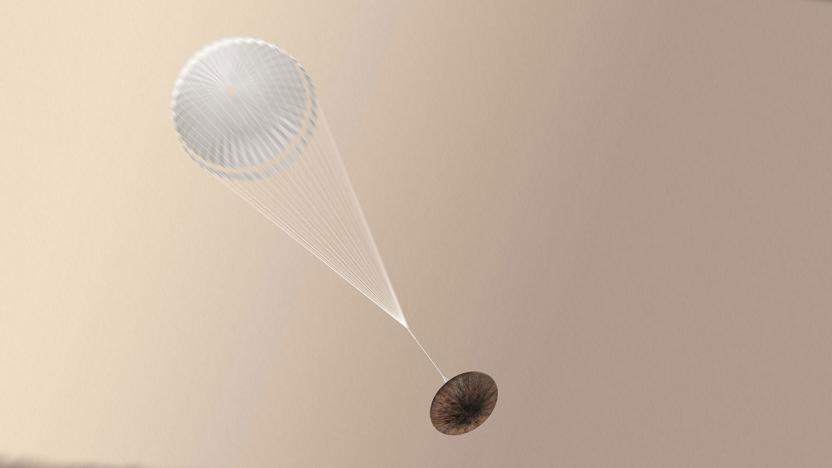
The ESA's ExoMars mission lander is still missing
The European Space Agency is still in the midst of investigating what happened to ExoMars' Schiaparelli lander, which seemed to disappear 50 seconds before it was supposed to land. At the presscon the agency held earlier, Andrea Accomazzo, ESA's head of planetary missions, said the ExoMars team already downloaded the data Schiaparelli sent to its mothership before it vanished. Unfortunately, we'll have to wait a bit more to get the whole picture, because it'll take some time to analyze the information.
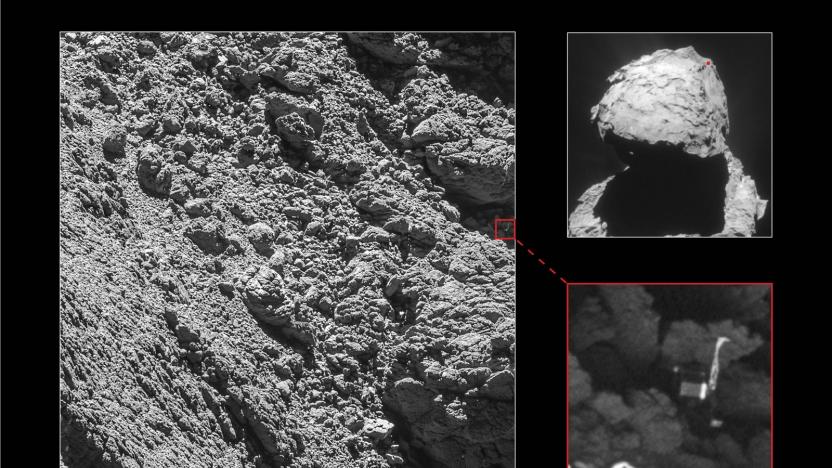
Rosetta probe belatedly finds the Philae comet lander
You have to sympathize with the European Space Agency. It's less than a month away from crashing its Rosetta probe into its host comet, and it just found the Philae comet lander -- you know, the machine the mission team stopped trying to contact back in July. Photos show that the lander get stuck in a dark crack on the comet in a position that prevents it from getting sunlight, revealing exactly why it went to sleep after a mere three days of activity. The ESA has had a general idea of where Philae was, but the low-resolution photos available before now made it hard to pinpoint the machine's location.

US grants its first clearance for a private flight to the Moon
If you're running a private American company that wants to send payloads to the Moon, who do you talk to in order to get the all-clear? Moon Express knows -- it just got the first-ever clearance from the FAA's Office of Commercial Space Transportation for a flight to the Moon. The move, which included consultation with NASA, the State Department and the White House, lets Moon Express deliver a robotic lander (including scientific experiments and cremated remains) to the lunar surface in 2017. The approval doesn't require any new laws, although NASA will advise the company during its mission.

Philae mission team says goodbye to the comet lander
The mostly quiet Philae comet lander appears to be silent for good. German space agency DLR announced today that it would no longer attempt to send commands to the unit. "Unfortunately, the probability of Philae re-establishing contact with our team at the DLR Lander Control Center is almost zero... it would be very surprising if we received a signal now," said project manager Stephan Ulamec. The news isn't too unexpected as the German Aerospace Center revealed last month that the latest attempts to revive the lander had been unsuccessful.

Philae comet lander has likely gone silent for good
If you were hoping for a happy ending to the Philae comet lander's frequently perilous adventures, you might be disappointed. The German Aerospace Center reports that a last-ditch attempt at contacting the lander has so far gone without a response. Either it doesn't have enough power to follow through, or it didn't get the commands in the first place. There will still be "contact opportunities" until January 21st (when the Rosetta spacecraft flies to the comet's southern hemisphere), the Center says, but it's not expecting to hear back.








